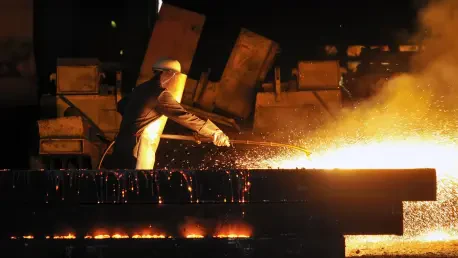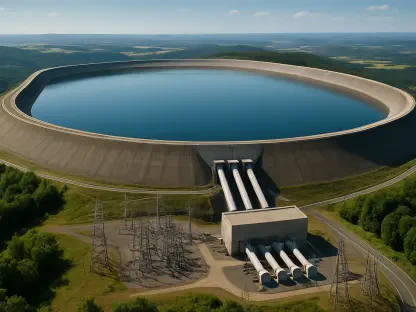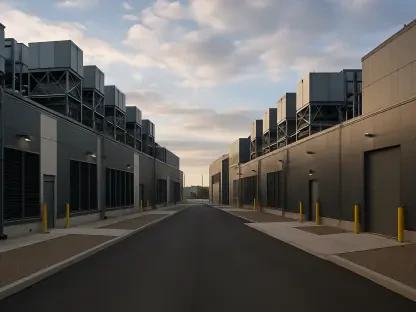Imagine a bustling steel plant in South Carolina where molten metal flows more freely than ever, revitalized by policy changes bringing new life to American industry. In this shifting landscape, strategic deregulation is setting the stage for a resurgence in U.S. steel production, demanding attention and curiosity about its long-term implications.
Unraveling the Steel Revival: Policy as a Catalyst
The world of steel lies at the heart of heavy industry, a marriage of fire and magic that transforms raw materials into the backbone of infrastructure. The ranking of the U.S. as a top steel producer has recently been bolstered by altered regulations, catching headlines and capturing attention. Central to this transformation is Nucor Corp’s mill in Berkeley, a site characterized by innovation and adaptation. The relaxed regulatory environment provides fertile ground for growth and efficiency, urging steel players to capitalize on newfound opportunities. The vibrancy of manufacturing hubs like Nucor’s South Carolina mill represents a microcosm of larger industrial shifts shaping America’s steel future.
Decoding Deregulation: Policy’s Intersection with Industry
Deregulation represents a tectonic shift in contemporary economic strategy, altering the rules that have long governed industries. Providing the steel sector with relief from stringent standards, this policy direction offers a new lease on life for manufacturing on American soil. South Carolina, with its rich industrial legacy, stands to benefit from a boom in steel manufacturing employment and economic activities. Nucor’s resurgence in Berkeley echoes the local narratives of job creation and community revitalization.
The Balance of Progress: Environmental Concerns Versus Industry Growth
The dance between regulation and revitalization involves complex steps. The Environmental Protection Agency, guided by Lee Zeldin’s leadership, has redefined the landscape with alterations to National Ambient Air Quality Standards and the New Source Review process. Against this backdrop, Nucor is integrating advanced technologies, like direct-reduced iron (DRI) processes, to reconcile industrial action with environmental considerations. A debate simmers between policy proponents and environmental advocates, with emissions data adding fuel to the conversation. The mill’s low-emission production model positions it as both a manufacturing leader and an environmental benchmark.
Inside the Industry: Voices Resonate
Industry perspectives offer firsthand insight into the real-world impact of deregulation. Vice President JD Vance highlights the newfound agility this policy shift grants to manufacturers, while Lee Zeldin champions the regulatory agility it promotes. Analysts have studied effects on emissions and production, offering a nuanced picture of the outcomes. On the ground, Nucor’s employees share stories of operational shifts that have catalyzed workplace morale and innovation, serving as a testament to the human side of industrial change.
Harnessing Policy: Empowering through Strategy
Employers within the steel ecosystem are recommended to strategically plan in order to fully capture the advantages afforded by policy shifts. Finding equilibrium between environmental responsibility and industrial needs is crucial, as is crafting frameworks that offer the flexibility to navigate these waters. By aligning state-level decisions with industry demands, regions like South Carolina can foster environments conducive to balanced growth. This strategy aims to preserve natural landscapes while advancing economic interests—a balanced blueprint for industry and ecology.
Looking Ahead
In the evolving narrative of American industry, deregulation played an instrumental role, rekindling the operational fires of U.S. steel manufacturing. Policymakers and industry leaders sought to strike a harmonious balance between nurturing industrial might and safeguarding environmental integrity. The story of Nucor’s South Carolina mill testifies to what could be achieved when strategic vision meets the will to innovate. As various sectors chart their futures, the lessons here offer both caution and encouragement, suggesting a path characterized by mindful progress and accountability to future generations.









